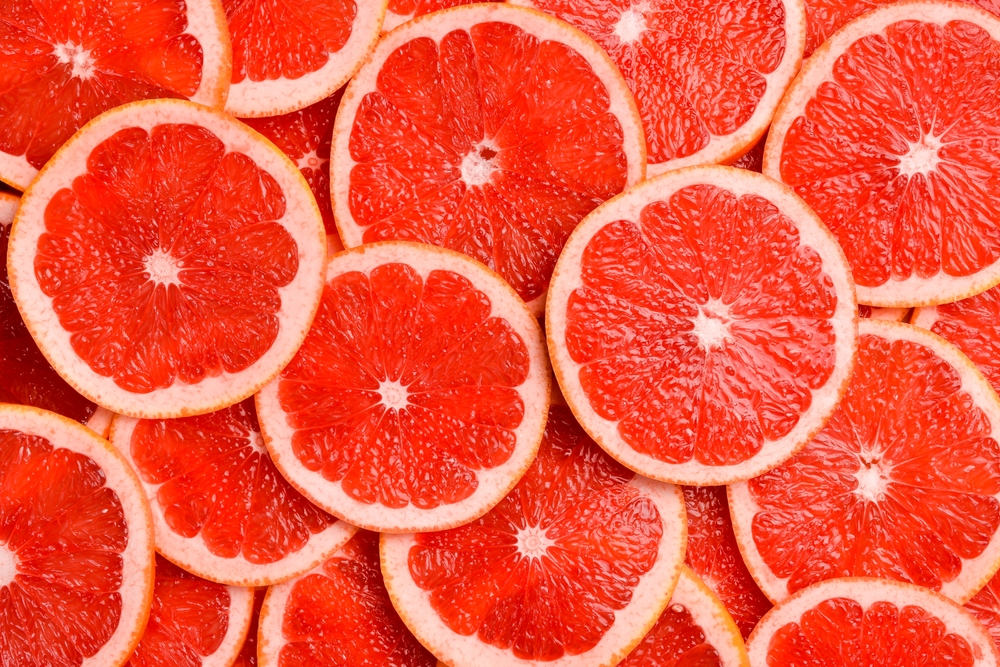Humans have been trying to game the system of eating since the invention of, well, eating. If there’s been a way to lose weight fast, detoxify something mysterious, or magically “cleanse” a perfectly functional liver, chances are someone has tried it – with a side of lemon water and probably a little regret.
Fad diets aren’t just the domain of Instagram influencers and juice bar menus. They’ve been around for centuries, just looking a little different. Today, it might be a viral TikTok “What I Eat in a Day,” but a few hundred years ago, it was Lord Byron sipping vinegar and skipping meals in the name of romantic melancholy and fashionable thinness.
The human obsession with food – what to eat, when to eat it, and most importantly, what not to eat – tells a much bigger story than just body weight. It’s a story about control, status, morality and identity, and how celebrity, war, culture and pseudo-science influence diet trends.
Ancient Diets and Early Beliefs
Hippocrates and Heal-all Humors
If you thought keto was intense, wait till you meet the ancient Greeks. Back in the 5th century BCE, food wasn’t just fuel. It was the primary form of healthcare, a test of someone’s personality, and moral compass all rolled into one. Hippocrates (yes, that Hippocrates—the “first, do no harm” guy) believed that the right diet could cure almost anything. He wasn’t entirely wrong, but his system was a little… moody.

Enter the theory of the four humors: blood, phlegm, black bile and yellow bile. Health, in this worldview, was all about keeping those fluids in balance. Feeling sluggish? Maybe your phlegm is winning. Overheated and angry? Classic excess of yellow bile. The solution – adjust your food. Cold and wet foods to calm you down, hot and dry to pep you up. Food was like ancient mood stabilizers, with some questionable side effects.
The Philosophy of Fasting
Meanwhile, in the Roman Empire, moderation was in vogue, at least in theory. The philosopher Seneca practiced intermittent fasting before it was cool, believing that a simple, sparse diet was key to a virtuous life. And while the elites feasted at banquets, Stoics were sipping barley gruel and congratulating themselves for not craving grapes.
Ancient dietary advice was very personalized, with nutritional advice based on their occupation, gender, and “cold or hot” disposition. Generally, most were partaking in what we would now call the Mediterranean diet, eating seasonally and making any changes gradually. Ancient physicians believed that radical shifts in diet could cause illness, so advised against any extreme changes to lose or gain weight. To an extent, these beliefs still stand today. Modern studies agree that small, incremental lifestyle changes are more likely to lead to sustained weight loss than radical ones.
Fast forward to the Middle Ages, and food took on a whole new job: spiritual purification. Religious fasting wasn’t just about skipping lunch – it was a direct line to holiness. The more you denied the body, the closer you got to God. Saint Catherine of Siena allegedly lived for years on little more than communion wafers and water, a medieval precursor to the “liquid diet,” if you will.

19th Century Diet Fads
By the 19th century, the business of dieting was starting to look oddly familiar. For the first time, being slim wasn’t just about self-discipline or spiritual purity, it was starting to be about fashion. And in the era of industrialization and tight corsets, the stakes were rising fast. Food and the body were no longer just functional, they were becoming statements.
The Original Culinary Influencers
Take Lord Byron. A Romantic poet with a dramatic flair and a fanbase to match, Byron made being pale and thin into a lifestyle. He famously subsisted on vinegar and water, with the occasional potato dipped in vinegar for “flavor.” (Yes, really.) His gaunt, melancholic look became a blueprint for young men and women who wanted to appear both intellectual and alluringly unwell. Dieting had entered the realm of aesthetic performance. And the idea that celebrity could dictate public eating habits? That’s older than you think.
Meanwhile in America, dietary reform was being served with a heavy side of morality. Enter Sylvester Graham, a Presbyterian minister, social reformer, and enemy of white bread. He believed that bland, fibrous food was the key to health and moral purity. Then there was Horace Fletcher, a man so enthusiastic about chewing that he turned it into a movement. “Fletcherizing” meant chewing each bite of food at least 32 times until it became liquid in your mouth. Fletcher was wildly popular for a time, and even convinced Henry James and John D. Rockefeller to follow him to a slimmer figure and moral elevation.
The Rise of “Scientific” Eating
On the more extreme end of the spectrum come diet pills with very old-fashioned and questionable contents. In the early 19th century, pills containing low levels of arsenic were being sold for weight loss. Yes, you read that right. Although incredibly poisonous, at low doses it acts as a stimulant to increase energy and promote weight loss. Even more concerningly, tapeworm eggs also made it to market in diet pills. The idea was that the tapeworms hatch in your stomach, and eat a proportion of the food that you eat, reducing the amount that you actually digest. Worth it?

These diet pioneers weren’t working with a solid understanding of biology or nutrition. What they had instead were strong convictions, charismatic delivery, and a public eager for answers. In an age of growing urbanization, industrial food production, and shifting social roles, people were looking for something to hold onto – preferably something “natural,” “clean,” and vaguely superior.
Early to Mid-20th Century Diet Crazes: Smoking, Soup, and the Birth of the Diet Industry
The Influence of Celebrity
This was the golden age of image-making. Film stars lit up cinema screens, fashion magazines gained traction, and body ideals (especially for women) started to narrow. Literally. Slenderness became synonymous with beauty, glamour, and self-control. And the diet industry responded with a mix of creativity, recklessness, and, frankly, marketing genius.
Unconventional Approaches
Let’s start with a wild one: The Cigarette Diet. In the 1920s and ’30s, tobacco companies started taking advantage of the idea that smoking could help people stay slim. “Reach for a Lucky instead of a sweet,” one ad declared, promising a sleek figure and social success. It wasn’t a diet, exactly, it was an appetite suppressant with a PR team. The message was clear: if hunger hits, light up. Health consequences? A problem for another decade.
Around the same time, the Grapefruit Diet rose to popularity. This was a low-calorie plan with a side of grapefruit at every meal, allegedly to kickstart fat-burning enzymes. It was light on science but heavy on promise, and its “celebrity-approved” status gave it cultural weight. Grapefruits have been clinging to this reputation ever since.

The War on Diets
The First World War also had a surprisingly lasting effect on how people thought about food, both in terms of scarcity and morality. With rationing and food shortages affecting much of Europe and North America, eating became a patriotic act. Government campaigns urged citizens to “eat less” and “waste nothing” to support the war effort, reinforcing the idea that self-denial was virtuous. In the U.S., the government promoted “Meatless Mondays” and “Wheatless Wednesdays,” not as diet plans, but as civic duty. These campaigns helped cement a link between food choices and moral value or social responsibility.
The Birth of the Diet Industry
By the 1950s and ’60s, dieting was no longer just a niche concern, it had become mainstream. Enter Weight Watchers, founded by Jean Nidetch, a housewife from Queens who built a community-driven model around calorie tracking and group accountability. Unlike earlier fads, this was structured, branded, and most importantly – repeatable. The same era saw the rise of Atkins’ early ideas, the low-carb, high-fat principles that would later dominate the 1990s, but in the mid-century moment, they were still percolating on the fringes.
And then there was cabbage soup. A diet plan passed around like a secret, promising dramatic weight loss if you could stomach the same watery soup for seven days straight. It had all the hallmarks of a classic fad: fast results, terrible long-term sustainability, and a side of social martyrdom.
What made this period unique wasn’t just the diets themselves, it was the shift toward mass marketing. Diet books, newspaper columns, and later, television all amplified the message. Slenderness wasn’t just desirable, it was a personal responsibility. The logic went: if you weren’t thin, you weren’t trying hard enough.

Late 20th Century to Early 21st Century
The “Magic” Pill
After World War II, soldiers began to report that their amphetamine pills prescribed to keep them awake also had the side effect of appetite suppression. This led to a remarketing of the product towards people looking to shave off a few pounds and the insurgence of the magic diet pill. Through the ‘70s, ephedra (a combination of caffeine and ephedrine), and fen-phen (fenfluramine and phentermine) were popular ways to reduce hunger and lose weight the “easy way”. However, pretty significant side effects like hemorrhagic stroke and heart lesions lead to their removal from the market during the ‘90s.
Calorie-Counting Culture and Low-Fat Lies
By the time the 1980s rolled around, the diet industry was no longer just part of the culture, it was the culture. Entire supermarket aisles were dedicated to low-fat products, weight loss books topped bestseller lists, and fitness infomercials were the soundtrack to late-night TV. This was the era of “Eat Less, Move More” – a message wrapped in Lycra, aerobics tapes, and calorie-counting obsession.
First came the low-fat craze. Sparked by a now-debunked theory that dietary fat was the root of all health evil, fat was stripped from everything, including yogurt, cookies, even salad dressing. Meanwhile, the Atkins Diet made a major comeback, this time with much slicker branding. Carbohydrates were the new enemy and bacon was suddenly back on the menu. Atkins promised dramatic weight loss without the hunger, just drop the bread and double down on protein. It worked for some, but sparked decades of mistrust towards carbs that still lingers today.
Meal Replacement and Mega-Cleanses
Enter Slimfast, a meal-replacement drink with the tagline: “a shake for breakfast, a shake for lunch, then a sensible dinner”. This chocolate, vanilla or strawberry flavored “meal” paved the way for the smoothie diets and juice cleanses of the 2000s. Around the same time, we saw the rise of the “detox” movement, for example the Master Cleanse, a truly masochistic blend of lemon juice, cayenne pepper, maple syrup, and water. It promised to flush toxins (undefined), shed pounds (definitely), and reset your system (whatever that meant). Celebrities swore by it. Nutritionists winced.

All of this was amplified by the growing reach of mass media. Suddenly, you weren’t just comparing yourself to your neighbor – you were measuring yourself against airbrushed supermodels and calorie-counting celebrities. The diet industry responded with enthusiasm, offering a new solution (and a new product line) every few months.
Social Media and Modern-Day Diet Trends: Filters, Fasts and the Cult of “Clean Eating”
If the 20th Century gave us calorie charts and Slimfast, the 21st gave us content. Suddenly food wasn’t just something you consumed, it was something you curated, photoshopped, and documented. Enter social media, and with it, a flood of diet trends that were less about nutrition and more about aesthetics, aspiration, and a camera-ready breakfast bowl.
One scroll through Instagram or TikTok and you’ll find yourself deep in the world of what I eat in a day videos—carefully plated meals, impossibly toned torsos, and captions that often read like nutritional advice, despite the lack of qualifications. It’s food as lifestyle branding: not just what you eat, but who you are.
Modern diet trends tend to recycle old ideas with new packaging. Keto, for instance, is essentially Atkins with better marketing and a Pinterest presence. Paleo is a romanticized (and wildly inaccurate) attempt to eat like a caveman, minus the actual physical hardship. Recent examples like Whole30, clean eating and intermittent fasting all promise clarity and control in a chaotic food environment. And for some people, they do offer structure or relief from chronic food confusion. But they also come with a heavy side of guilt, perfectionism, and moral superiority baked in.
Then there are the products. Detox teas, celery juice cleanses, supplements marketed as “fat burners” – a booming corner of the wellness market fuelled by influencer sponsorships and algorithmic reach. Often, these products aren’t regulated and have little to no evidence backing them. Also concerning is the sheer speed of trend cycling, a new miracle food (avocados, bone broth, sea moss gel) can go viral overnight. There’s also a darker undercurrent where disordered eating is being dressed up as “wellness”. Orthorexia – an obsession with eating “pure” or “correct” foods – has become increasingly common, especially in online spaces where clean eating is treated as a moral virtue. And thanks to echo chambers and aesthetic algorithms, people are increasingly exposed to more extreme, polarising, and sometimes dangerous ideas about food and body.

Perhaps the most telling shift is in the language. We rarely talk about “dieting” anymore, but rather doing a “reset”, a “cleanse”, or a “30-day challenge”. Its not about weight loss (wink, wink), its about wellness, glow, gut-health and healing. But scratch the surface and the old preoccupations are still there: restriction, body control, and a deep cultural discomfort with simply eating.
The Psychology and Sociology Behind Fad Diets: Why We Keep Biting
Fad diets aren’t just about food. They’re about identity, control, hope, fear, status, and every messy emotion that gets stirred up when we look in the mirror or open the fridge. If fad diets were purely about science, most of them would’ve died a quiet death in the appendix of a nutrition textbook. But they didn’t. They endured because they speak to something deeper.
Certainty in a World of Chaos
At their core, fad diets offer certainty. When confronted with conflicting information and constant change, a diet plan with clear rules feels like a lifeline. “Eat this, not that.” “Follow these steps, get these results.” It’s seductively simple, especially when real nutrition science is anything but. Metabolism is complex. Human bodies are variable. But a seven-day soup cleanse? That you can control.
This is particularly appealing during moments of upheaval, albeit personal or societal. War, economic instability, cultural change all tend to be followed by a spike in diet trends. Because when everything else feels unmanageable, what you put on your plate can feel like a small but powerful act of agency.
Morality, Status and the “Good Person Diet”
There’s also the moral layer. Diets, especially modern wellness-style ones, often position themselves as a reflection of virtue. You’re not just cutting carbs; you’re “clean eating.” You’re not skipping meals; you’re “intermittent fasting.” There’s an implied hierarchy: those who follow the rules are disciplined, enlightened, responsible. Those who don’t? Lazy, unhealthy, unmotivated. This moral framework plays out socially too. In many circles, what you eat (or don’t eat) becomes a form of status signaling. Food becomes a way to broadcast identity, values, and class, whether it’s access to expensive organic products or the time and knowledge to follow complex regimens.
Here’s a relevant, visually digestible table that captures the key historical phases, beliefs, and cultural dynamics of fad diets covered in the article:
A Timeline of Fad Diets and Their Cultural Drivers
| Era | Notable Diet Trends | Key Figures/Influencers | Underlying Beliefs or Motivations |
|---|---|---|---|
| Ancient Times | – Humor-based dietary prescriptions – Fasting for virtue | Hippocrates, Seneca | Health as balance of humors; food as moral/philosophical tool |
| Middle Ages | – Religious fasting – Minimal food intake for spiritual purity | Saint Catherine of Siena | Spiritual elevation through bodily denial |
| 19th Century | – Vinegar diet – Fletcherizing – Chewing obsession – Arsenic pills | Lord Byron, Sylvester Graham, Horace Fletcher | Thinness as fashion; diet tied to morality; early pseudo-scientific methods |
| Early 20th Century | – Cigarette diet – Grapefruit diet | Lucky Strike, 1920s Hollywood stars | Appetite suppression as marketing; rise of media influence |
| WWI Era | – Rationing -based “diets” (Meatless Mondays, Wheatless Wednesdays) | Government campaigns | Self-denial as patriotism and moral duty |
| 1950s–60s | – Weight Watchers – Cabbage soup diet – Low-carb ideas emerge | Jean Nidetch, Dr. Atkins | Structured community dieting; emergence of diet as industry |
| 1970s–90s | – Amphetamines, ephedra, fen-phen – Low-fat craze – Atkins reboot | Pharmaceutical companies, food industry | Weight loss via chemicals; vilification of fat; media-driven body ideals |
| 2000s | – SlimFast – Master Cleanse – Juice cleanses | Beyoncé (Master Cleanse), SlimFast ads | Quick fixes; “detox” as lifestyle branding |
| 2010s–Present | – Keto, Paleo, Whole30 – Intermittent fasting – Clean eating trends | Influencers, TikTok/Instagram creators | Control, identity signaling, and performative wellness via curated content |
The Quick Fix Fantasy
Fad diets also thrive on urgency and transformation. The before-and-after story is one of the oldest, most powerful narratives in the book. And fad diets promise not just physical change, but psychological rebirth: more confidence, more energy, more control. They tap into that deep desire to start over and become a “new you” with a fridge full of promise and a plan that finally makes sense.
The science, of course, rarely matches the hype. Most fad diets lead to short-term weight loss followed by eventual regain, along with a side of frustration and shame. But the hope they sell? That’s what keeps them going. Hope that this one might finally be different.
Community, Belonging, and the Tribe Effect
And finally, there’s belonging. Many diet plans aren’t just solo ventures, they’re communities. Think Weight Watchers meetings in the 80s, online keto forums today, or Facebook groups dedicated to Whole30 survival strategies. These diets come with a sense of tribe. Shared language, shared rules, shared struggles. That kind of group identity can be incredibly powerful, and makes the diet harder to leave, even when it stops working.
Fad diets are a mirror, reflecting our fears, values, and cultural obsessions back at us, decade after decade. From vinegar-sipping poets to TikTok-approved detox teas, we’ve been sold countless versions of the same story: that the “right” way to eat will unlock the “right” way to be. But here’s the truth: human bodies are complex, context matters, and there is no one-size-fits-all path to health. Most fad diets promise clarity but deliver confusion. They prey on our desire for control, identity, and fast results, offering temporary fixes to problems that are anything but simple.

That doesn’t mean that we are doomed to repeat the cycle forever. The more we understand the history, psychology and marketing behind fad diets, the better equipped we are to step outside the loop. Eating well doesn’t need to be performative, punishing, or photogenic. It just needs to be grounded in science, in self-awareness, and ideally, in something delicious.
So the next time a “revolutionary” diet trends across your feed, take a breath. Ask what it’s really offering and what it’s really costing. Because food isn’t a test of willpower or worth. It’s nourishment, connection, and (dare we say it?) something to enjoy.








